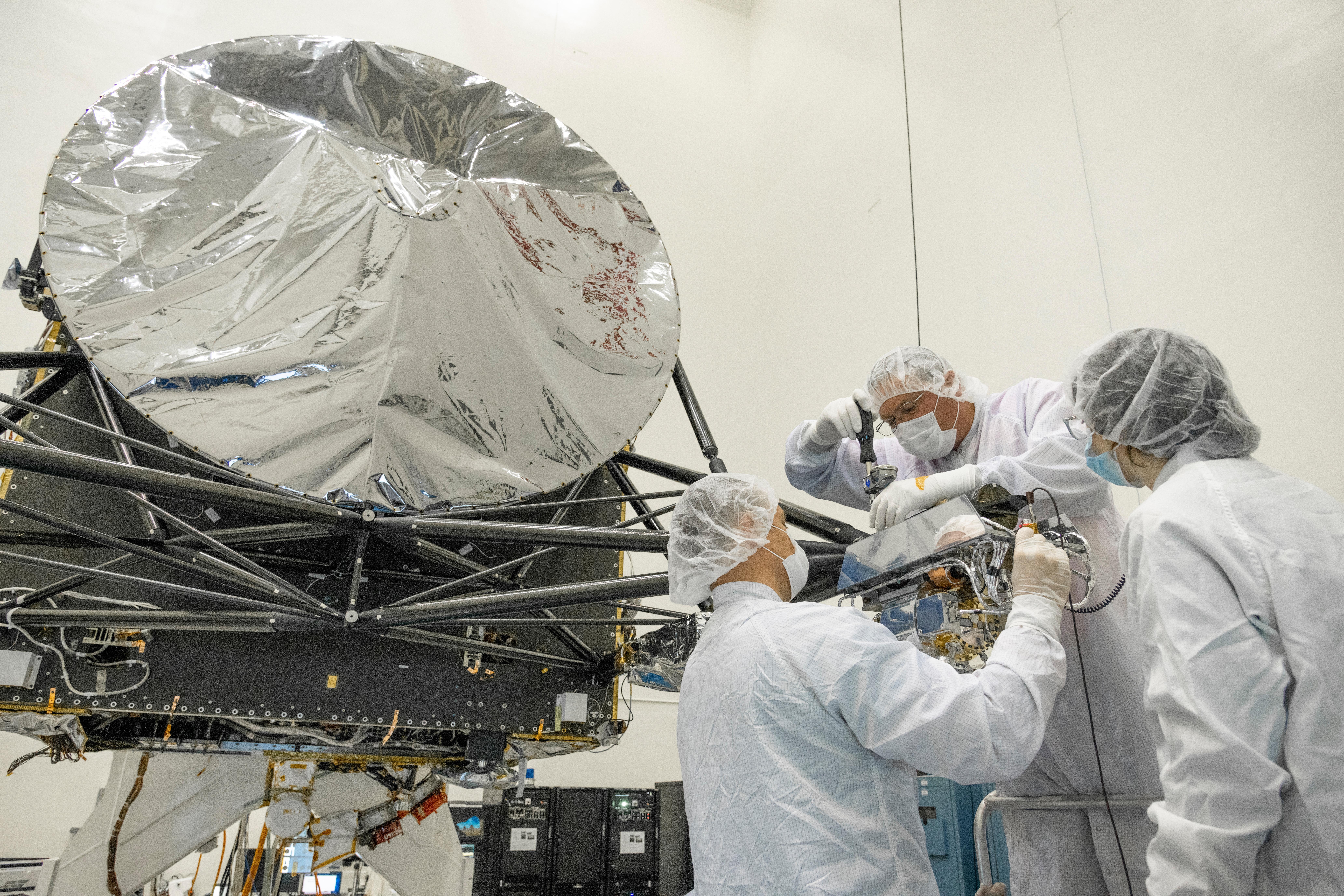
|
Psyche’s Gamma Ray and Neutron Spectrometer in the Works
- Click the image above for a larger view
- Full-Res JPEG (8256 x 5504) (8.8 MB)
- Full-Res TIFF (8256 x 5504) (101.0 MB)
Caption:
Engineers at NASA's Jet Propulsion Laboratory in Southern California integrate the gamma ray and neutron spectrometer instrument into the agency's Psyche spacecraft on Aug. 23, 2021.
Psyche, set to launch in August 2022, will investigate a metal-rich asteroid of the same name, which lies in the main asteroid belt between Mars and Jupiter. Scientists believe the asteroid could be part or all of the iron-rich interior of an early planetary building block that was stripped of its outer rocky shell as it repeatedly collided with other large bodies during the early formation of the solar system.
The spacecraft will use the GRNS to study the neutrons and gamma rays coming from the asteroid's surface to help determine its elemental composition. As cosmic rays and high energy particles impact the surface of Psyche, the elements that make up the surface material absorb the energy and in response emit neutrons and gamma rays of varying energy levels. These emitted neutrons and gamma rays can be detected by the GRNS and analyzed by scientists, who can match their properties to those emitted by known elements to determine what Psyche is made of.
Background Info:
Arizona State University in Tempe leads the Psyche mission. JPL is responsible for the mission's overall management, system engineering, integration and test, and mission operations. Maxar Technologies in Palo Alto, California, supplied the spacecraft's high-power solar electric propulsion chassis.
For more information about NASA's Psyche mission, go to: http://www.nasa.gov/psyche or https://psyche.asu.edu/
Cataloging Keywords:
| Name | Value | Additional Values |
|---|---|---|
| Target | 16 Psyche | |
| System | Main Belt | |
| Target Type | Asteroid | |
| Mission | Psyche | |
| Instrument Host | Psyche | |
| Host Type | Orbiter | |
| Instrument | Gamma Ray and Neutron Spectrometer (GRNS) | |
| Detector | ||
| Extra Keywords | Color, Impact | |
| Acquisition Date | ||
| Release Date | 2021-10-04 | |
| Date in Caption | 2021-08-23 | |
| Image Credit | NASA/JPL-Caltech | |
| Source | photojournal.jpl.nasa.gov/catalog/PIA24891 | |
| Identifier | PIA24891 | |
